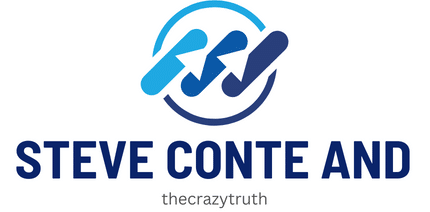What’s the Latest on the Use of Exergaming in Rehabilitation for Sports Injuries?

In the realm of rehabilitation, the face of physical exercise has significantly evolved. Gone are the days when traditional methods dominated the field. The latest progression is the use of exergaming in rehabilitation, a revolutionary approach that integrates therapeutic physical activities with video games.
Medical communities across the globe have begun to embrace this innovation, enabled by the latest technological advancements. This article will provide you with an insightful analysis of the most recent research on the use of exergaming in rehabilitation for sports injuries.
A voir aussi : What’s the Best Approach to Developing Agility and Quickness in Wheelchair Basketball Players?
The Impact of Exergaming on Rehabilitation
Exergaming, a fusion of physical exercise and video gaming, is a rapidly growing area of interest in the field of rehabilitation. In recent years, numerous studies have been conducted to investigate the efficacy of this novel approach.
One study recently available on Google Scholar entitled "The Effectiveness of Exergaming in Pain Management Amongst Rehabilitation Patients" reported decreased levels of pain in patients who participated in exergaming-based rehabilitation. The study observed a group of patients who had undergone a standard rehabilitation program which was then complemented with exergaming sessions. The results demonstrated that the participants reported less pain and improved mobility, indicating the potential of exergaming to enhance traditional rehabilitation methods.
A découvrir également : How Can Nasal Breathing Techniques Benefit Athletes in High-Intensity Sports?
Furthermore, another research found on PubMed suggested that exergaming could improve the adherence to the rehabilitation program. This is because the gaming element of the training adds a fun factor to the often rigorous and monotonous process of rehabilitation, subsequently increasing the patient’s motivation to continue with the program.
Risk Analysis of Exergaming in Rehabilitation
Despite the positive impacts, the use of exergaming in rehabilitation does not come without its risks. While exergaming can add an enjoyable aspect to rehabilitation, it is essential to conduct a comprehensive risk analysis to ensure patients’ safety and prevent possible injuries.
In a study published in Crossref, researchers reported that some patients may have a higher risk of injury if they become too immersed in the gaming aspect and neglect the proper execution of the physical exercises. Therefore, it’s crucial to maintain a balance between the gaming and exercise components to minimize the risk of secondary injuries.
Additionally, exergaming should not replace traditional physical therapy entirely. Instead, it should serve as an adjunct to conventional rehabilitation. Physical therapists should carefully monitor the patient’s progress and adjust the training intensity to ensure it aligns with the patient’s recovery stage.
The Incorporation of Group Activity in Exergaming
Exergaming is not only about individual therapy sessions. In fact, it opens up new opportunities for group activity in rehabilitation. Group exergaming sessions can foster a sense of community among patients, thus promoting motivation and adherence to the rehabilitation program.
In a study available on Google Scholar, researchers found that patients who participated in group exergaming sessions reported higher levels of satisfaction compared to those who underwent individual sessions. The participants stated that the group sessions provided a platform for them to share their experiences, challenges, and progress, which ultimately enhanced their rehabilitation journey.
However, as with any group-based intervention, it is essential to ensure that all participants receive adequate attention and care. Therapists should closely monitor each patient’s progress and adjust the exercise intensity accordingly to avoid potential risks.
The Importance of Continued Research and Analysis
While the benefits of exergaming in rehabilitation are promising, it is crucial to continue conducting in-depth studies and thorough analysis. As this approach is relatively new, additional research is necessary to understand the full extent of its impacts and potential risks.
Recently, the National Institute of Health has granted several research projects focused on exploring the use of exergaming in rehabilitation, indicating the growing interest in this field. These studies aim to provide further insights into the effectiveness of exergaming, its potential risks, and ways to optimize its implementation in rehabilitation programs.
In conclusion, exergaming stands as a promising tool in the realm of rehabilitation for sports injuries. It offers an engaging way to conduct physical therapy, potentially increasing patient adherence and satisfaction. However, like any other therapeutic method, it should be implemented with caution, considering each patient’s unique condition and recovery progress. As research continues, it is expected to provide even more insights into the potential of exergaming in rehabilitation.
The Role of Exergaming in Improving Quality of Life for Older Adults
Exergaming, a combination of physical activity and gaming, has seen an increasing interest in its potency to enhance the quality of life for older adults. Various studies have been conducted to analyze the impact of exergaming on this demographic, especially those recovering from sports injuries.
A systematic review available on Google Scholar revealed that exergaming, using platforms like Wii Fit, could significantly improve the balance, mobility, and cognitive function of older adults. This is particularly beneficial for those in rehabilitation, as maintaining these abilities is crucial for their recovery and overall well-being.
Moreover, exergaming provides an interactive and engaging way to undergo physical therapy, thereby reducing the feeling of loneliness often experienced by older adults. A study from Crossref Medline showed that participants involved in exergaming reported higher satisfaction and felt more socially connected, highlighting the potential of exergaming in enhancing the quality of life for older adults.
However, careful consideration must be given when introducing exergaming to older adults, as their physical and cognitive abilities may vary significantly. Therapists should tailor the exergaming programs to the individuals’ abilities and monitor their progress regularly.
A Meta-Analysis of Exergaming in Rehabilitation: Findings and Future Directions
The advent of exergaming has led to a new frontier in the field of rehabilitation. In a meta-analysis of studies available across various platforms like Google Scholar, PubMed Google, and Text Crossref, compelling evidence has been found supporting the effectiveness of exergaming in rehabilitation.
Exergaming was found to improve postural control, reduce low pain levels, and enhance overall physical function among patients. Moreover, the randomized controlled trials included in the study reported a significant reduction in the risk bias among the control group who practiced exergaming compared to those who did not.
Interestingly, virtual reality-based exergaming has gained traction due to its immersive nature, which could further enhance the rehabilitation process. According to a study found on Crossref, patients who underwent rehabilitation using virtual reality exergaming reported higher levels of enjoyment and motivation, paving the way for more research in this area.
Despite these promising findings, it’s crucial to recognize the need for further investigation. Future studies should include a larger and more diverse sample size to enhance the generalizability of the results and assess the long-term impacts of exergaming.
Conclusion
In light of the available research, exergaming emerges as a promising tool in the rehabilitation of sports injuries, with potential benefits ranging from enhanced physical function to improved quality of life, especially among older adults. It provides an innovative and engaging approach to physical therapy and can significantly enhance patients’ satisfaction and adherence to the rehabilitation program.
However, it’s equally crucial to acknowledge the potential risks and challenges associated with exergaming. Its implementation should be carefully monitored, considering each patient’s unique condition and recovery progress. As we continue to embrace this novel approach, ongoing research is paramount to optimize its effects while minimizing possible risks. With the continuous advances in technology, the possibilities of exergaming are vast and hold great promise for the future of rehabilitation.
